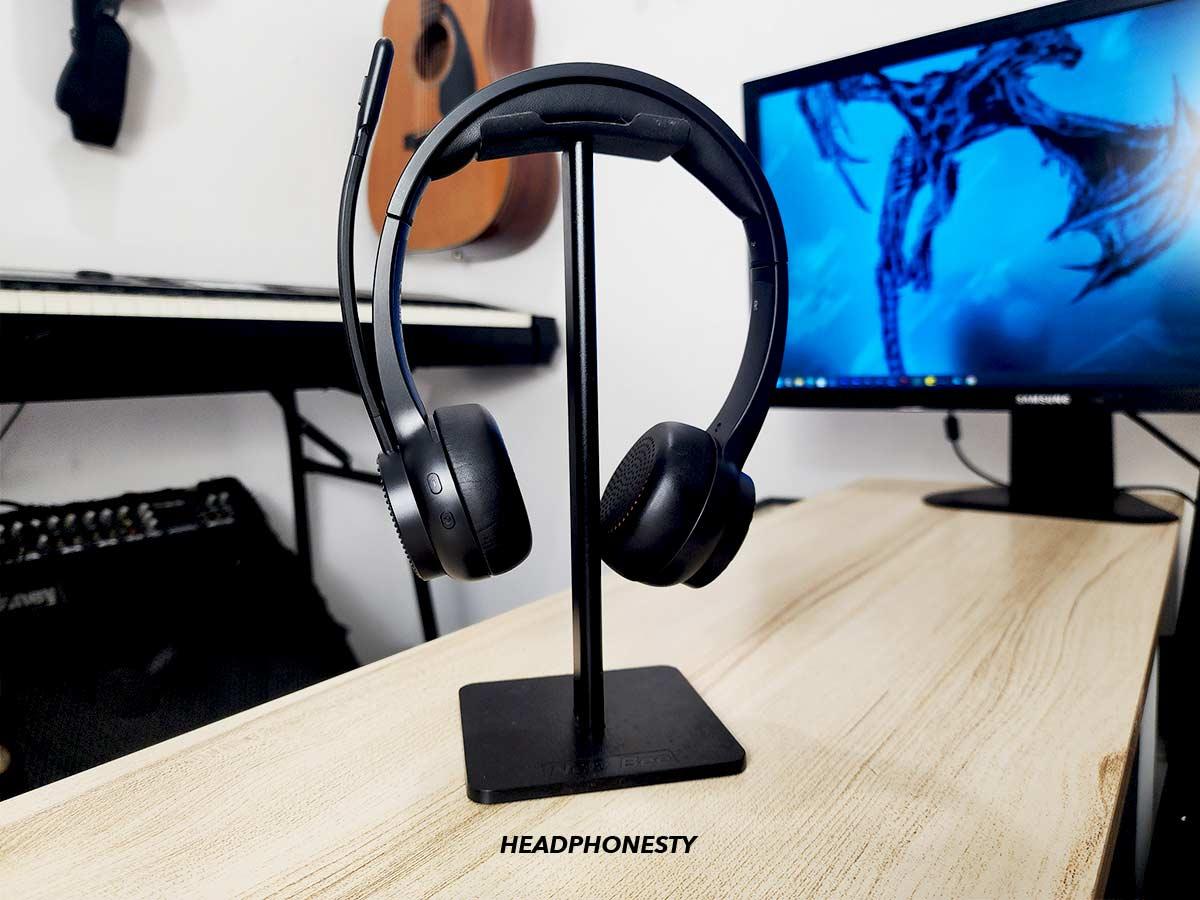The EKSA H16 impresses with solid sound and robust build – but yearns for a mic upgrade.
In the bustling world of office work, clear communication is key. Today, we’re examining the EKSA H16, a Bluetooth wireless headset designed with office professionals in mind.
- Good build quality.
- Nifty USB dongle storage with a magnetic cover on the right earcup.
- Easy pairing and connection.
- Wider soundstage than typical on-ear headphones.
- Doesn’t distort your voice during calls.
- Kick drums sound boxy.
- The treble is underwhelming.
- Ear pads are not breathable and can cause sweating.
- Can’t filter out background noises well.
- Slight feedback noise on the left side.
As someone who spends significant time handling calls and appreciates good sound quality, I’m curious to see how this headset can enhance my daily communication. Will they make the cut in a busy work environment? Let’s dive in and find out.
Company Overview
EKSA, established in 2018, is dedicated to enhancing gaming experiences through innovative headphones and accessories. They introduced EKSAtelecom in 2020, a brand focused on communication headsets for truckers and office workers.
Their commitment to quality was recognized when they won a Red Dot Award in 2022. With a gamer-first approach, EKSA offers the latest technology, a two-year warranty, and 24/7 customer service, aiming to become a recognized name in the esports industry.
Technical Specifications
- Form: On-ear headset
- Driver Diameter: 40 mm
- Impedance (Ohm): 32 Ω ± 15%
- Sensitivity (dB): 115 ± 3 dB
- Frequency Response (Hz): 20 Hz – 20 kHz
- Battery Life (hrs): 55 hours of music time (70% volume), 35 hours of talk time (70% volume), 2.5 hours of charging time
- True Wireless: Y
- Bluetooth Version: 5.2
- Range: 50ft/15M
- Mic: Y
- Weight (g): 150 g
Packaging
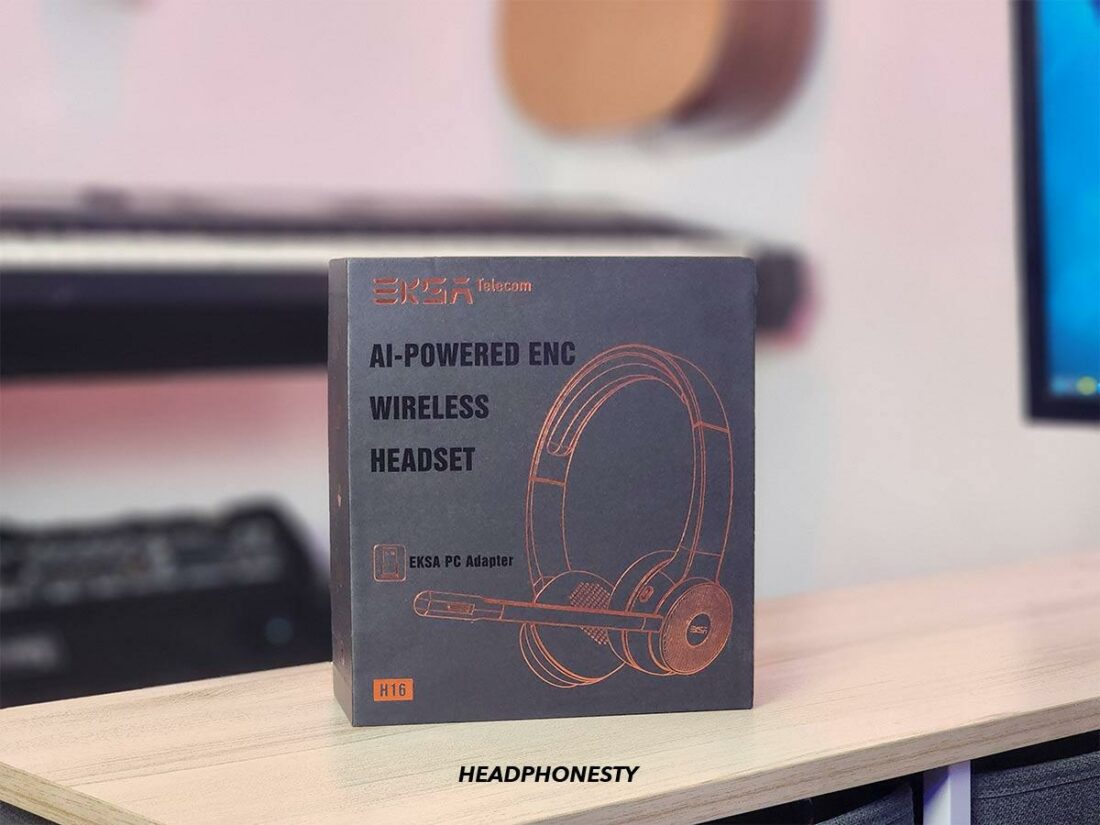
Upon receiving the EKSA H16, I was greeted by a sleek, black cardboard box that housed the headphones. The box, with its minimalist design, exuded an air of sophistication that was quite appealing. The headphones were nestled comfortably within a cardboard cutout, swathed in a plastic protection layer – a simple yet effective packaging solution.
However, as I examined the packaging further, I couldn’t help but feel that a molded foam insert would have provided a more secure fit for the headphones.
The current cardboard cutout, while functional, allows for movement within the box. Shaking the headphones could potentially pose a risk during shipping, especially considering the delicate nature of such audio equipment.
Despite this minor critique, I must commend the thoughtfulness that went into the aesthetics of the packaging. The box’s color and design are pleasing to the eye, suggesting that someone had indeed taken the time to balance both form and function.
This level of attention to detail is something I wouldn’t typically expect from budget headphones, and it was a pleasant surprise. It’s clear that EKSA is making strides to deliver a premium unboxing experience, even for its more economically priced offerings.
In the box
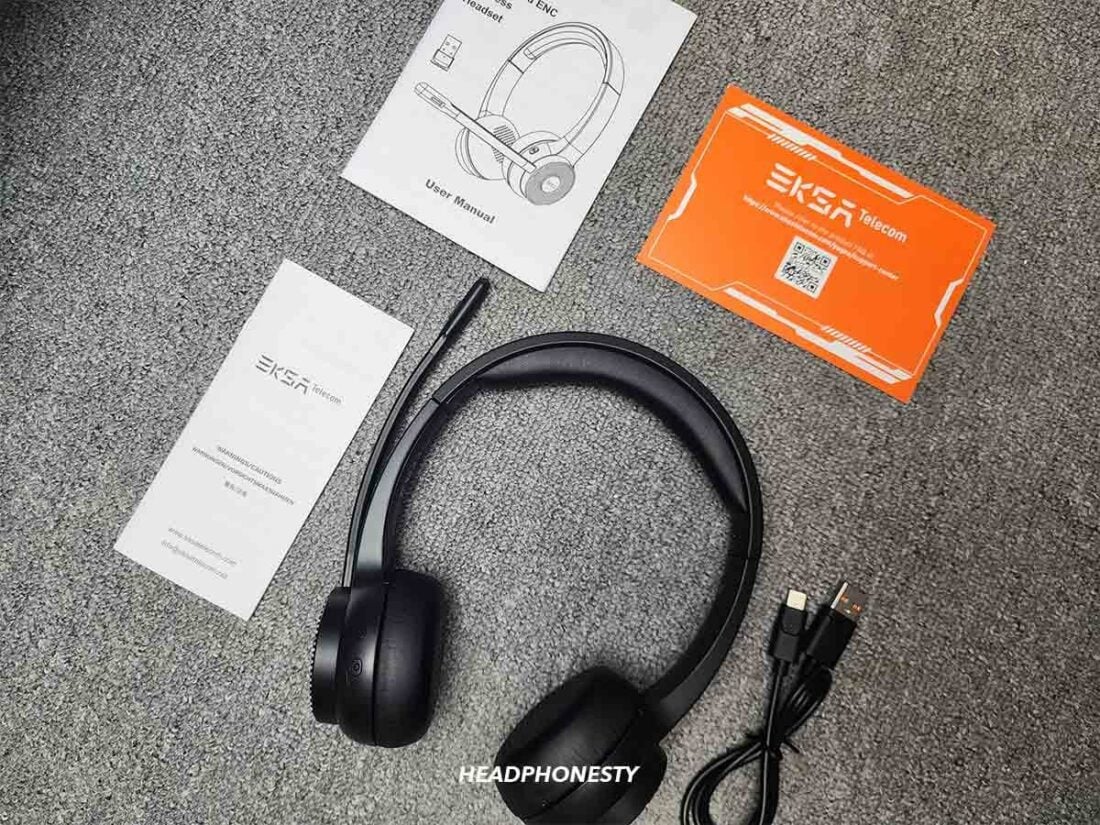
- Eksa H16 headphones
- USB – C charging cable
- USB – A dongle (located inside the headphones and covered with a magnetic cover)
- User manual
- Warning/Caution manual
- Product QR code
Design
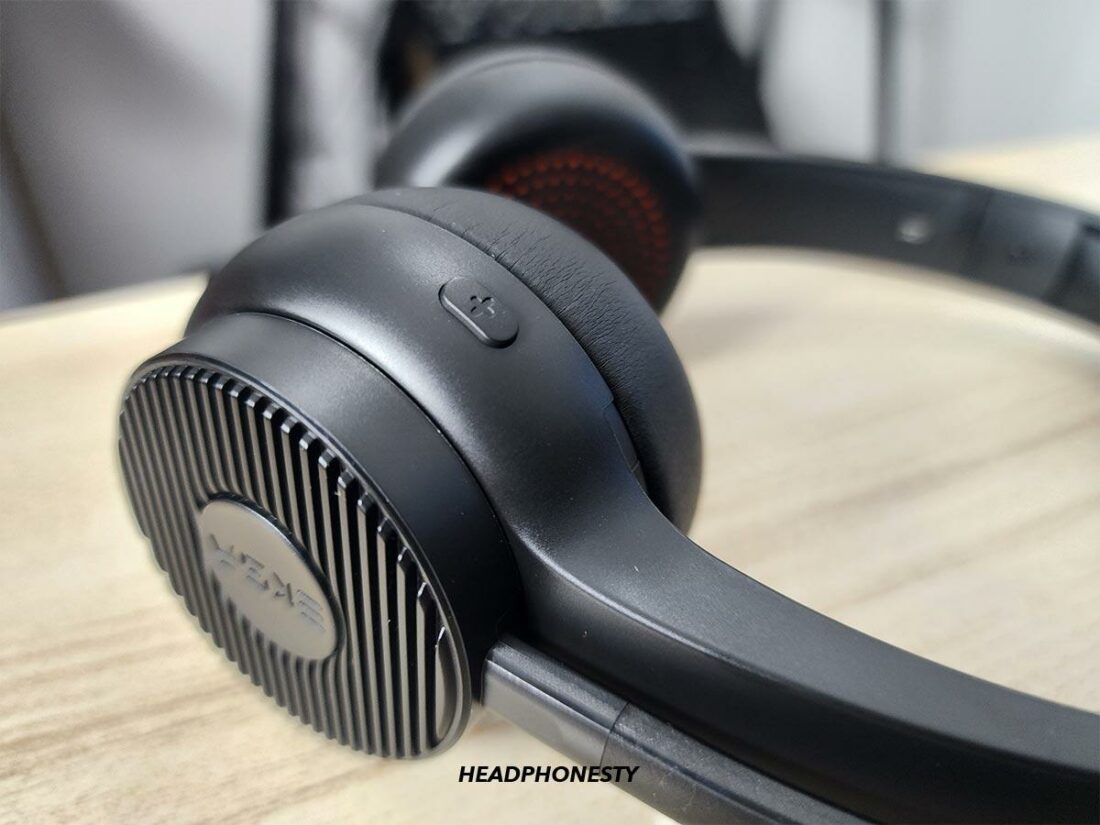
In terms of materials, the H16 employ a black plastic headband, protein leather earmuffs, and a bendable silicon mic boom arm. The plastic used in the headband feels durable, thick, and smooth to the touch. It doesn’t produce that cheap, clattering sound when moved, which is a testament to its quality.
The product literature boasts of a 1.8M drop test, and while I didn’t dare to put this claim to the test, the build quality certainly lends credibility to it. The sound produced when tapping the plastic suggests it’s not hollow, further reinforcing its durability.
The EKSA H16 strike a commendable balance between adjustability and sturdiness. The headband, for instance, can be easily tweaked to fit your head size without exerting any undue force. It’s not too loose, either, so you won’t have to worry about unintentional adjustments.
This ‘just right’ quality also extends to the microphone, which is sturdy and maintains its position once adjusted. The bendable silicon mic boom arm is one of my favorite design elements. It offers a good range of movement, allowing for optimal mic positioning relative to your mouth.
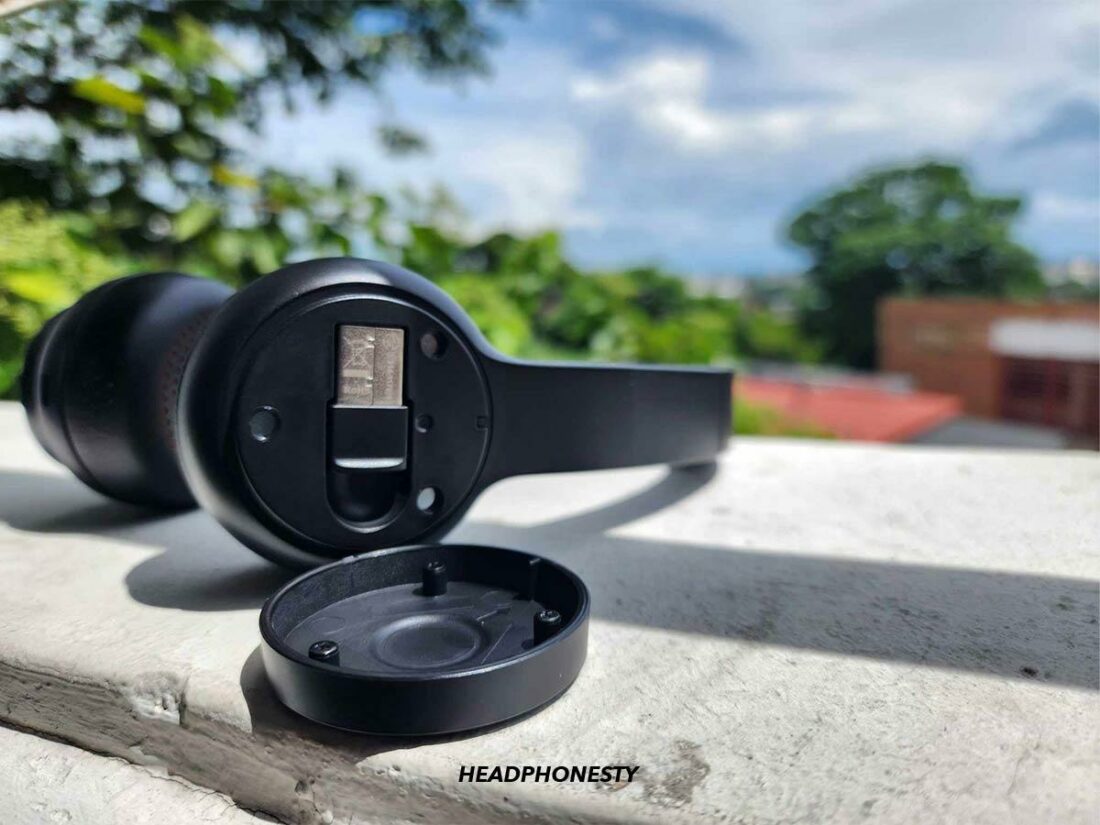
A unique feature of the H16 is the slot in the magnetic cover on the right ear, designed to store the USB dongle. This thoughtful addition eliminates the worry of misplacing the dongle and enhances the user experience.
However, the magnetic cover can sometimes come off unintentionally when wearing the headphones and be a nuisance when putting it back. Despite this minor inconvenience, the overall design of the EKSA H16 is impressive, especially considering its price point.
Comfort
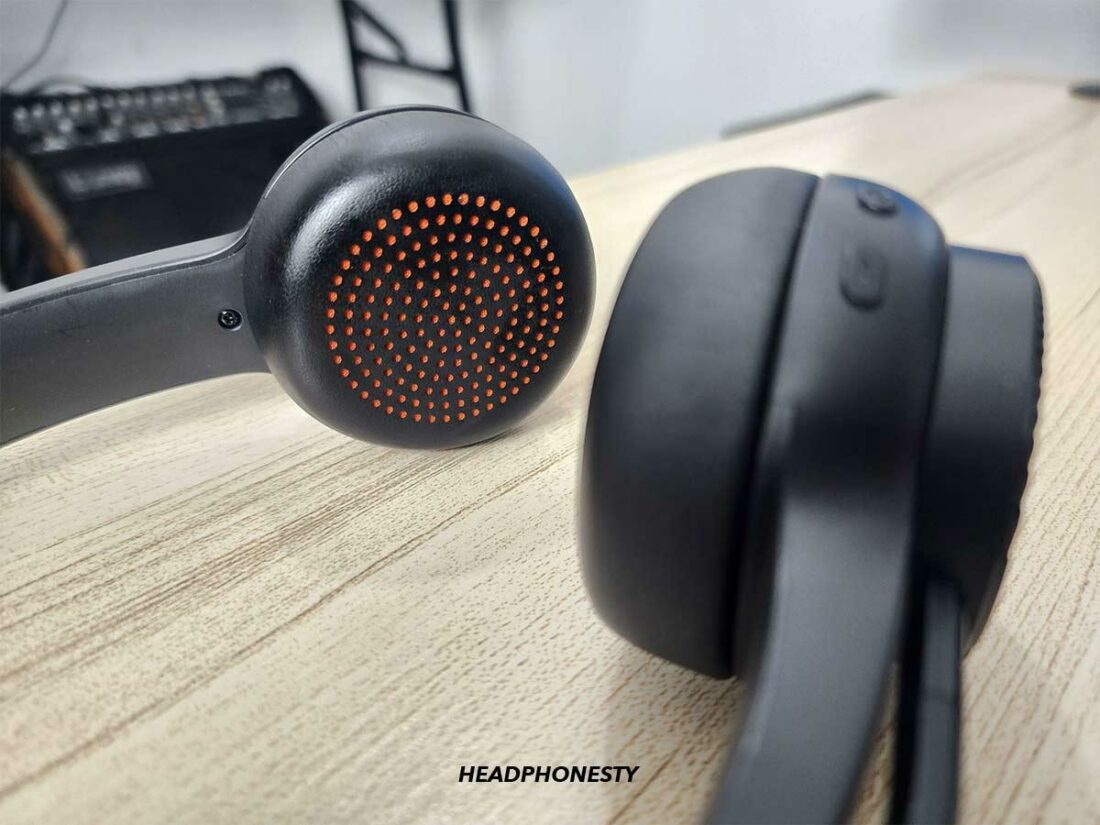
The EKSA H16, while offering a host of impressive features, do fall short in size.
For me, the fit is a tad snug, so I’d hesitate to recommend these for individuals with larger heads. That being said, even though the headphones fit tightly, they don’t cause any discomfort to my ears or head, thanks to the soft ear pads and the padded headband.
Weighing in at a mere 150 grams, the H16 are quite lightweight. This lightness contributes to overall comfort, ensuring that the headphones don’t feel burdensome even after extended periods of wear.
The ear pads, crafted from protein leather, are soft and smooth to the touch. However, after about an hour of use, I noticed that they began to induce a bit of ear sweat and warmth. While this is a common issue with many headphones, it’s something to consider if you plan on using these for long periods.
Internals
Diving into the internals of the EKSA H16, the battery life is a standout feature. Advertised to last up to 55 hours, my testing corroborates this claim. I’ve been using these headphones for three days straight without reaching for the charger, which is quite impressive.
The H16 also boast a connectivity range of up to 15 meters, thanks to Bluetooth 5.2. I put this to the test by leaving my laptop in one room and wandering around my house. I’m pleased to report that I didn’t experience any interference, which speaks volumes about the strength of the connection.
Connecting the headphones is a breeze. Simply turn them on, find them in your Bluetooth devices list, and you’re all set. If you’re using the USB dongle, it’s as easy as plugging it in, and you’re ready to go almost instantly.
The on-ear ear cups house the 40mm drivers, which deliver a robust sound. However, I did encounter a minor issue. I noticed a tinny, ringing, or beeping sound – a sort of feedback – in the left earcup where the mic is connected.
This isn’t noticeable when music is playing, but it becomes apparent when there’s silence, especially in between tracks. It’s a bit distracting and somewhat reminiscent of tinnitus. To ensure it wasn’t an issue on my end, I tested other headphones, including noise-canceling ones, and didn’t experience the same problem, so it seems to be unique to the H16.
Despite this minor hiccup, the battery life and connectivity range are quite impressive.
Microphone
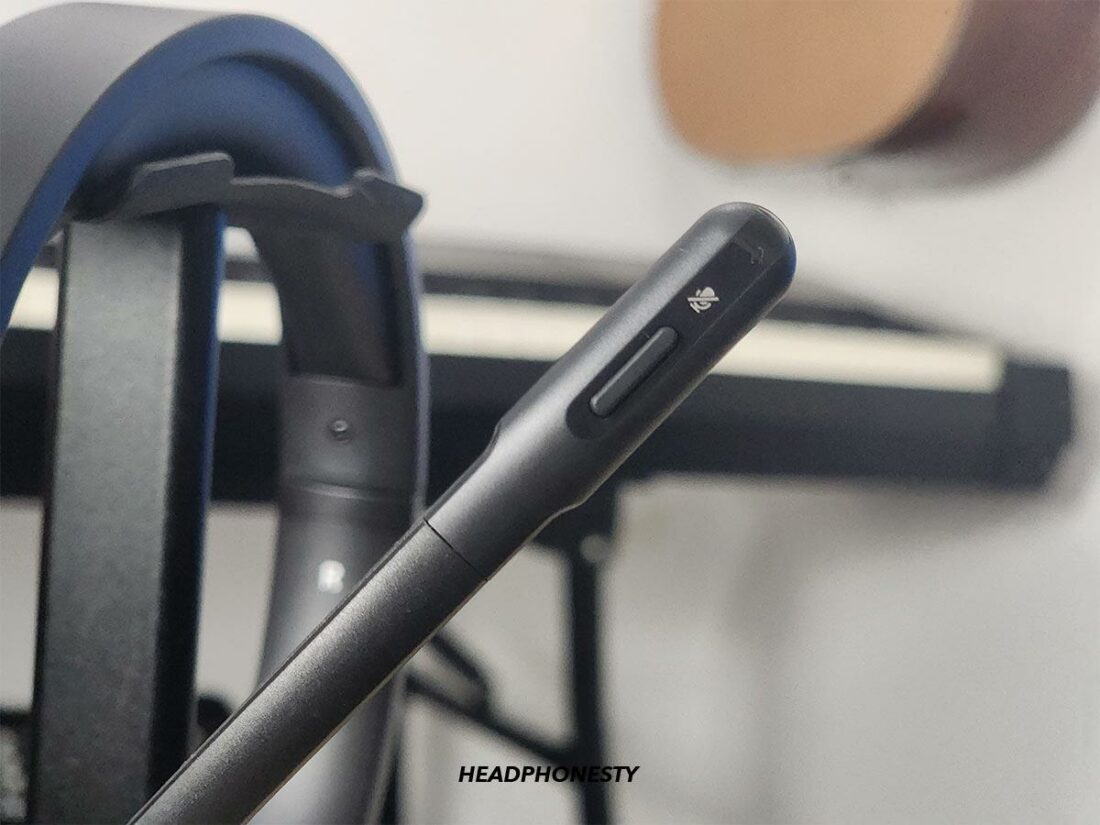
The microphone performance of the EKSA H16 is a mixed bag. In a relatively quiet environment, it does pick up some background noise, such as the hum of an air conditioner or the whir of a fan. However, these sounds are minimal and don’t overpower the primary audio.
The microphone does an admirable job of capturing my voice, which comes across as natural and clear, standing out above the background noise without any noticeable distortion in tone.
However, the microphone’s performance takes a hit in noisier environments. Here, it tends to pick up a significant amount of background noise, to the point where it can overpower my voice during recordings.
Despite the touted “EKSA VoicePure ENC Technology,” my voice didn’t come across as clearly as I would have liked, and the volume was noticeably reduced.
In fact, the background noise often seemed louder than my actual voice. Additionally, my voice tended to sound thinner than usual when there was a lot of background noise.
EKSA H16 Sound
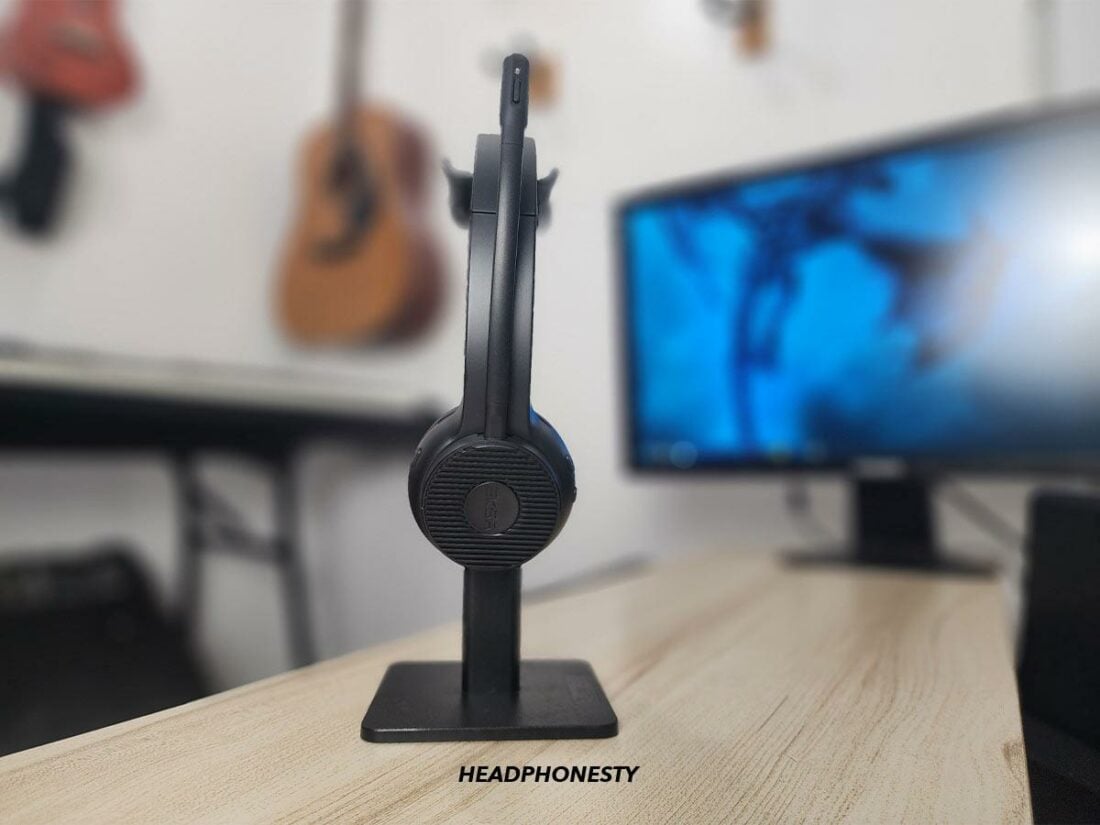
The EKSA H16 deliver a sound quality that is both balanced and full-bodied. When I put on my favorite tracks, I was immediately struck by the richness of the low end, which was complemented by just the right amount of highs to maintain clarity.
Listening to an instrumental track was a delight. The H16 allowed me to distinguish each sound without much effort, a testament to its sound separation capabilities.
The soundstage, while not expansive, is more than decent for on-ear headphones. This was particularly evident when I listened to The Beatles’ ‘Here Comes the Sun’ on YouTube. I was pleasantly surprised by how easily I could pinpoint the location of the instruments.
The headphones also did a commendable job of reproducing the shifting of sound between the left and right ear cups, creating a satisfying stereo effect.
While I wouldn’t go as far as to say the soundstage is super wide, the H16 do offer a pretty good stereo reproduction. It’s a delightful surprise, especially considering these are office headphones, not specifically designed for music.
Bass
I decided to test the bass with some of Queen’s iconic tracks, where the bass lines were easily discernible, delivering a satisfyingly punchy sound. However, not all elements hit the mark. The kick drum is somewhat boxy, and the bass guitar’s lower notes occasionally veer towards muddiness.
The bass is clear, yet it lacks the punchiness that can make bass-heavy music truly resonate.
This absence of physicality in the bass response is a slight disappointment. Moreover, when the mix becomes denser – with all instruments and vocals playing simultaneously at similar frequencies – the bass sometimes loses its distinctiveness, muddied by the mids.
While the EKSA H16 capably reproduces bass lines, they fail to deliver the immersive, full-bodied bass experience that bass enthusiasts might crave.
Midrange
Moving on to the midrange, I tuned into Eva Cassidy’s rendition of ‘What a Wonderful World.’ The vocals were striking in their clarity and forwardness. The midrange has a slightly aggressive edge, lending an ‘in-your-face’ quality to the sound, yet it is still clear enough to enjoy the vocals.
One of the H16’s strengths lies in thier ability to separate vocals from instruments, creating a nuanced listening experience where each element of the track can be dissected and appreciated.
However, the overall sound signature leans towards the warm and smooth side, with the mids and treble slightly more recessed than the bass. This tuning lends a heavenly quality to singers with a soft alto or bass timbre, but it doesn’t provide as much support to more powerful belting vocals or sopranos.
Treble
Finally, I turned my attention to the treble performance of the EKSA H16. The upper frequencies are brilliant yet not sibilant, maintaining the clarity of details without introducing any piercing highs.
This balance makes for an enjoyable extended listening session without discomfort – a quality always appreciated in headphones.
The H16 surprised me with their airy sound, an unexpected characteristic for these on-ear headphones that added spaciousness to the sound. However, the treble slightly lacks sharpness, leaving it somewhat underwhelming. It doesn’t deliver quite enough crispness to bring a track to life.
Comparison
I also received the EKSA H6, the over-ear version of the H16. Aside from having different cup shapes, the H6 sound significantly different from the H16.
Although both use the same drivers, I can clearly tell that the EKSA H16 have better sound quality than the H6. The H16 have more thump, and the bass frequencies sound fuller than on the H6. The H6, on the other hand, sound distant and weak.
The EKSA H16 microphone is of the same quality as the H6.
The plastic on the H16 seems more sturdy and compact, while the H6 sound a bit hollow. The H16 contain a compartment for the USB Dongle, which the H6 do not, so you won’t have to worry about misplacing it.
The EKSA H16 are slightly less expensive than the EKSA H6 but have a superior build quality and sound.
Where to Buy
Conclusion
As the final notes of my testing playlist faded away, I found myself reflecting on the unexpected journey the EKSA H16 have taken me on.
The sound quality they deliver is surprisingly decent, with a smoothness to the audio that I found quite enjoyable. However, I did find myself longing for a more pronounced treble and the resonant thump of kick drums.
The build quality of the H16 aligns well with EKSA’s promise. The headphones feel sturdy and, dare I say, slightly more premium than what one might anticipate at this price point. It’s clear that EKSA has made a concerted effort to deliver a product that punches above its weight in terms of build and design.
However, the microphone leaves a bit to be desired regarding noise cancellation. While it performs adequately for regular office use, I would hesitate to recommend it in noisier environments such as cafes or outdoor settings. The background noise is amplified to the point where the ENC technology seems to be canceling out your voice instead of the ambient noise.
Despite this, the EKSA H16 offer a compelling package for those seeking a budget-friendly, yet quality, office headset. It’s a testament to EKSA’s commitment to delivering value without compromising quality or design.
